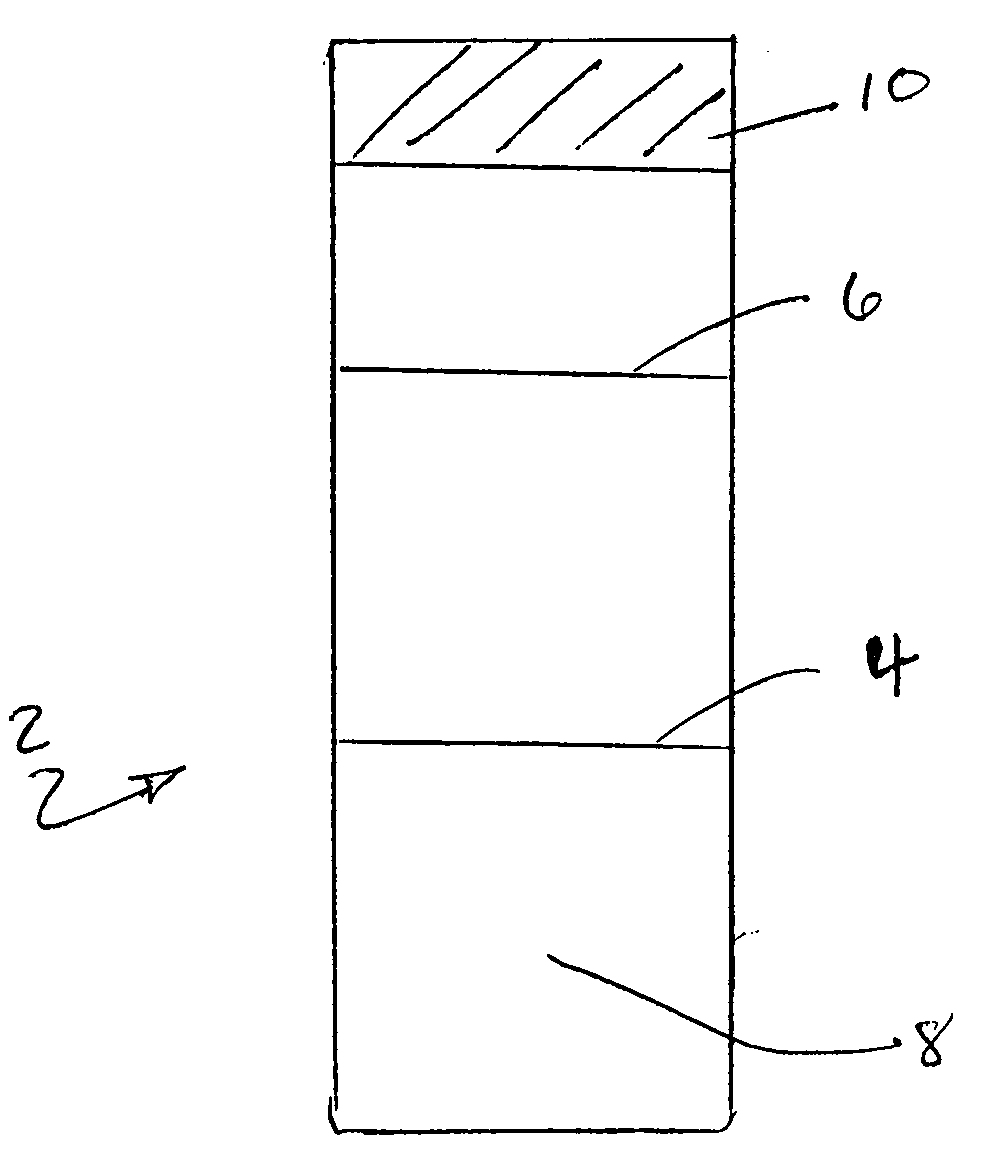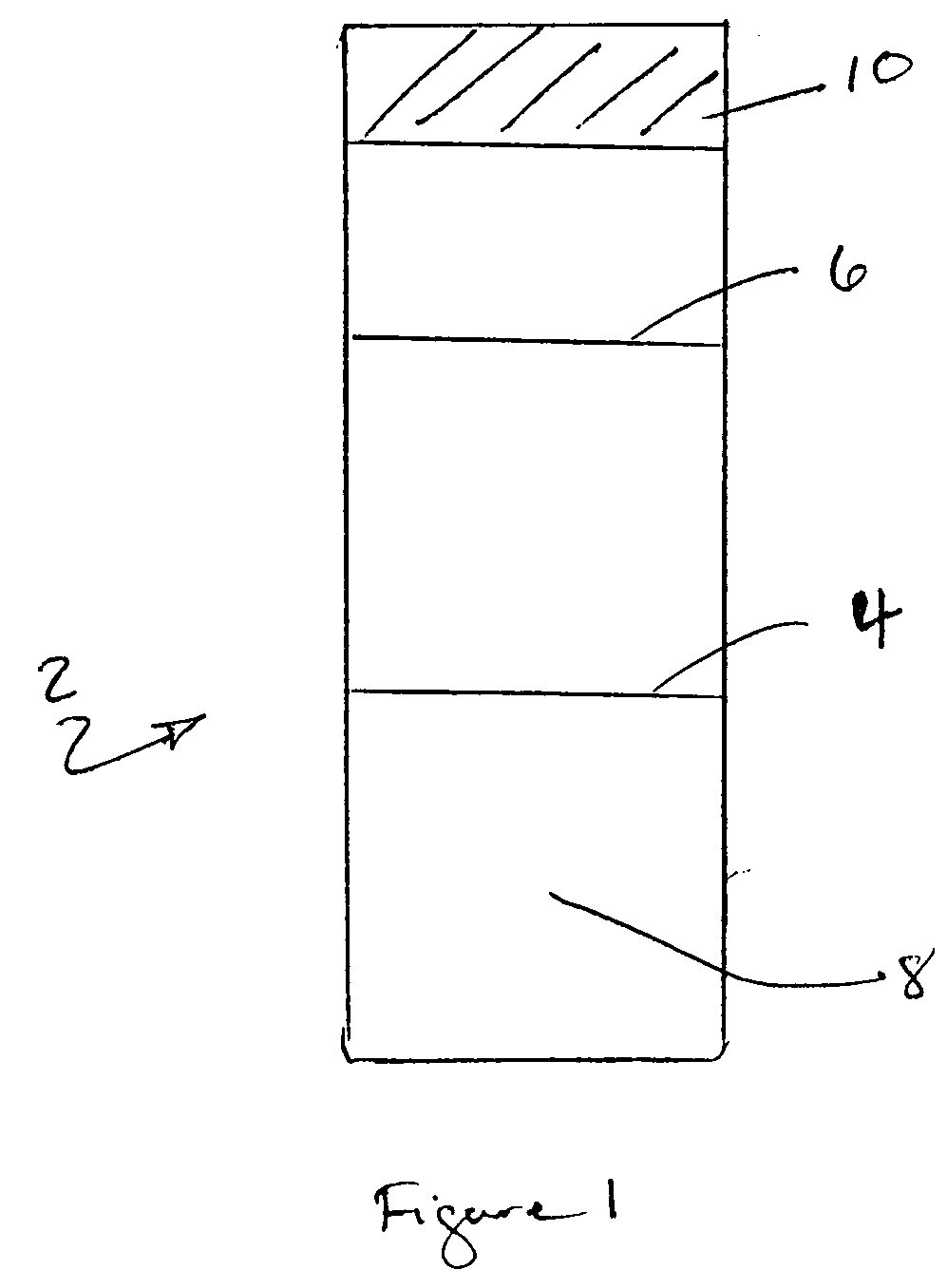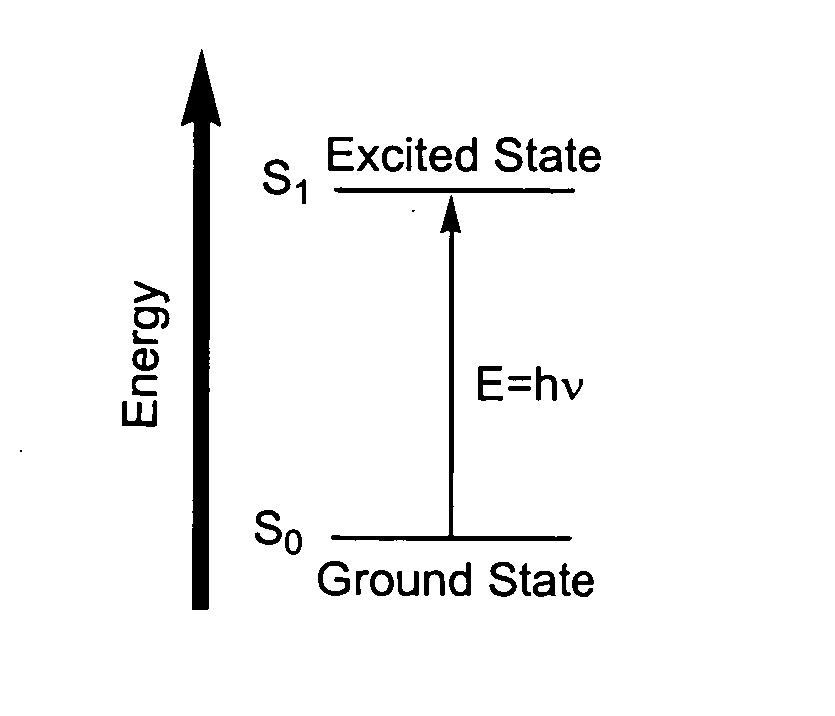Solvatochromatic bacterial detection
- Summary
- Abstract
- Description
- Claims
- Application Information
AI Technical Summary
Benefits of technology
Problems solved by technology
Method used
Image
Examples
example 1
[0063] The dye candidate (Reichart's Dye) was coated onto a Scott paper towel (0.5 g of dye in 20 ml of isopropanol), dried and tested by placing an aliquot (100 microliter) of liquid containing a known concentration of harmful bacteria. The dye turned colorless in less than 10 seconds in the area wet by the bacteria containing spot, indicating the presence of bacteria. A similar sized spot of the media liquid, that did not contain bacteria, did not change color. Initially, a bacterial concentration of 108 colony forming units per ml was spotted onto the coated towel. The bacteria suspensions were diluted with water to reduce the bacteria concentrations and a second drop was placed on the towel below the first drop. The experiments were repeated until the spot did not show a visible change.
[0064] The bacteria used in this test were E. coli, P. aeruginosa, Salmonella as viable gram negative bacteria, Staphlococcus aureus, and S. xylosis as viable gram positive bacteria, and S. aureu...
example 2
[0067] A solvatochromic dye, in this case merocyanine dye, (from Sigma-Aldrich Chemical) was coated onto a Scott® paper towel by the dip and dry method, in an amount of 0.5 g in 20 ml of water, and allowed dry. The dried paper towel was orange in color.
[0068] The solvatochromatically treated paper towel was tested by placing 100 microliters of human urine that had been aged at 25° C. for two weeks and had a bacterial concentration greater than 10,000 CFU / ml. The dye turned yellow in less than 5 seconds in the area wet by the bacteria, thus indicating the presence of the bacteria. A sample of urine was filtered with a 0.2 micron filter to remove microbial contamination and deposited on the treated towel and there was no color change. This indicates that there was no interference by any other agents or chemicals in the urine.
example 3
[0069] Millipore nitrocellulose HF75 membrane (from Millipore Corporation of Billerica, Mass., USA) was laminated onto a plastic supporting card (from Millipore Corp.) having a length of approximately 30 centimeters. On both the detection zone and control zone, a solution of 5 weight percent Reichardt's dye in iso-propanol was hand striped. The membrane was dried in a laboratory oven for 1 hour at a temperature of 37.5° C. After the membrane card was taken from the oven, a cellulosic wicking pad (Cat# CFSP203000 from Millipore Corp.) was attached to one end of the membrane closer to the control zone. The other end of the card, used to attach the sample pad, was cut off. The card was then sliced into 4 mm strips to form half sticks.
[0070] Once the half sticks were prepared, a bacteria solution was applied to the end of the detection membrane. Capillary action pulled the solution and bacteria into the detection zone and a color change was noted in the detection zone. The control line...
PUM
| Property | Measurement | Unit |
|---|---|---|
| Time | aaaaa | aaaaa |
| Time | aaaaa | aaaaa |
| Percent by mass | aaaaa | aaaaa |
Abstract
Description
Claims
Application Information
 Login to View More
Login to View More - R&D
- Intellectual Property
- Life Sciences
- Materials
- Tech Scout
- Unparalleled Data Quality
- Higher Quality Content
- 60% Fewer Hallucinations
Browse by: Latest US Patents, China's latest patents, Technical Efficacy Thesaurus, Application Domain, Technology Topic, Popular Technical Reports.
© 2025 PatSnap. All rights reserved.Legal|Privacy policy|Modern Slavery Act Transparency Statement|Sitemap|About US| Contact US: help@patsnap.com



